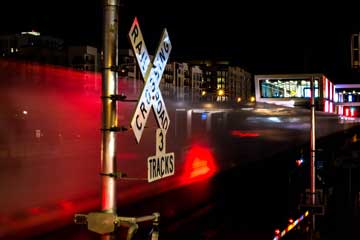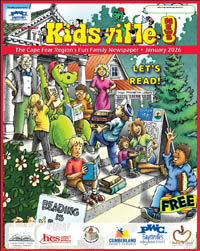 Fayetteville, particularly in downtown, is sadly no stranger to the danger of rail line crossing points. The last fatality occurred in the downtown district in 2017 when a truck sought to go around a single crossing arm, became disabled and was struck by a CSX train, killing one passenger and injuring another.
Fayetteville, particularly in downtown, is sadly no stranger to the danger of rail line crossing points. The last fatality occurred in the downtown district in 2017 when a truck sought to go around a single crossing arm, became disabled and was struck by a CSX train, killing one passenger and injuring another.
These rail line crossing points are located at intersections that will soon see even more pedestrian and vehicular traffic as the Fayetteville Woodpeckers begin playing and the Prince Charles reopens in April 2018. For example, the two rail line crossing points that bookend the 400 block of Hay Street, near the city’s baseball stadium and the Prince Charles Hotel, only offer flashing lights as a safety measure. No crossing arms are present at these locations.
As of early 2018, multiple groups of local stakeholders started to come forward to consider the establishment of a “quiet zone” in the downtown. Anticipating increased pedestrian and vehicular traffic in the district, stakeholders saw a need to increase safety at rail line crossing points and an opportunity to improve the new experience available through the baseball stadium and apartments, hotel and restaurants. In addition to preparing for the new residents and businesses in the 400 block of Hay Street, the district must also prepare for easy and safe access for the new residents of the 272 multifamily units in the Cross Creek Pointe Residential Development. The District is an art and entertainment asset for the entire city and region — it should be as safe and as accessible as possible to anyone who wants to play, work or live downtown.
While quiet railroad zones may be a new topic to many in our community, they are not uncommon. There are more than 815 Federal Railroad Administration regulated quiet zones nationwide and seven in North Carolina that improve the safety of railroad crossings and reduce their noise disruption. Between 2016 and 2018 alone, more than 100 quiet zones were added nationally and two were added in North Carolina.
What exactly is an FRA-regulated quiet zone? The FRA issued regulations, which took effect in 2005, (that) require locomotive horns be sounded in advance of all public highway-rail crossings and provide local communities the option of silencing them by establishing quiet zones. In a quiet zone, the railroad company, local government and the state transportation authority work together to determine what additional safety measures can be implemented, instead of train horns, at every point where pedestrian or vehicular traffic crosses a rail line. These supplemental safety measures ensure equivalent or enhanced safety at railroad crossing points and include additional gates, medians, curbs, lights, signals, road markings and other upgrades. A quiet zone may only take effect after all necessary safety measures are installed and operational.
After careful review, the Cool Spring Downtown District Board of Directors voted unanimously at the March 15 board meeting to gather additional research to help educate local leaders on the options available to communities to address the railroad noise and advocate for adoption and implementation of policies that protect human lives and reduce the noise associated with train activity.
Patrick Callahan
Chairman, Board of Directors
Cool Spring Downtown District, Inc.

 How to resolve AdBlock issue?
How to resolve AdBlock issue? 








